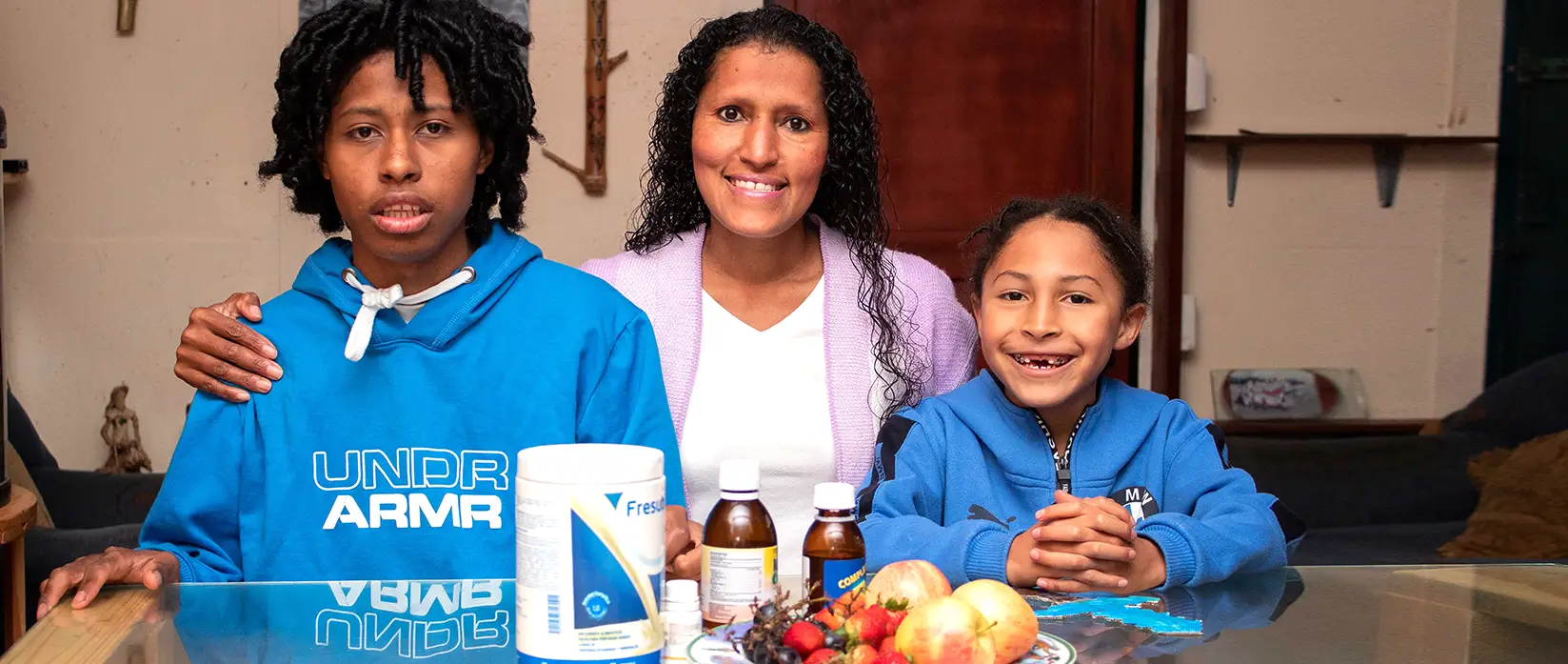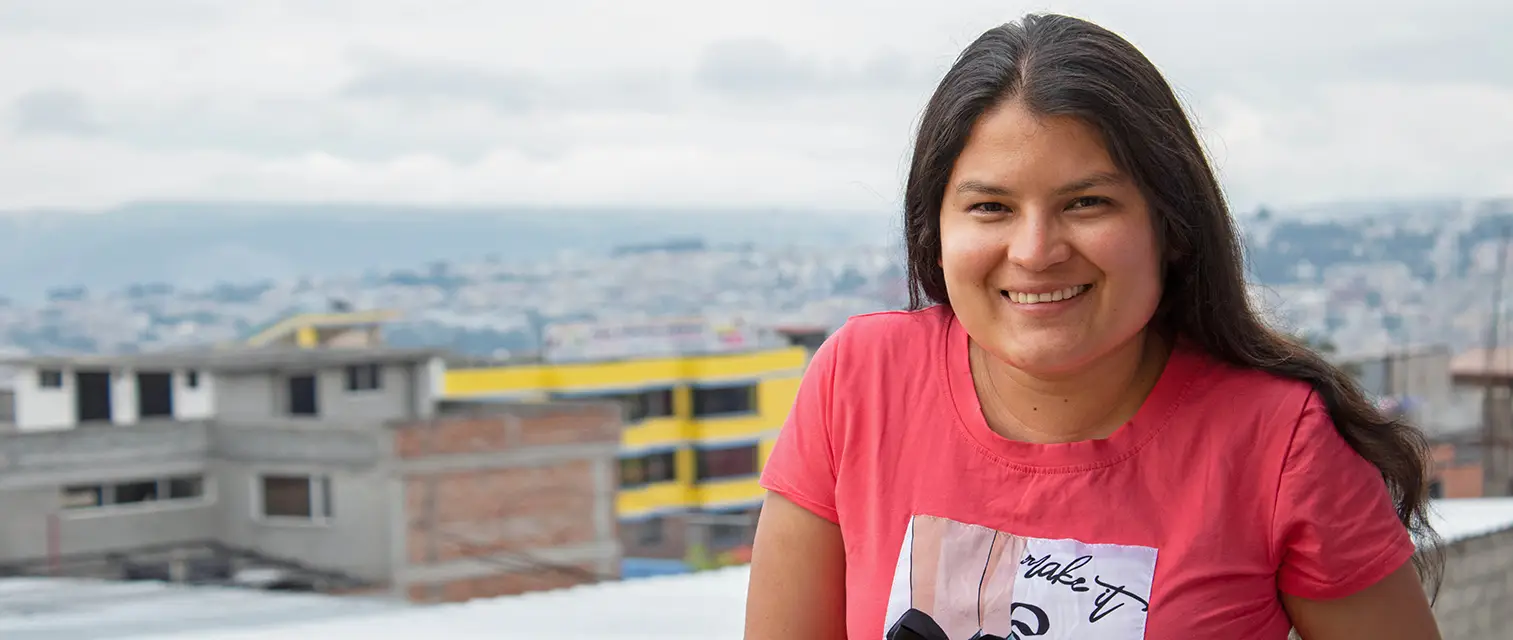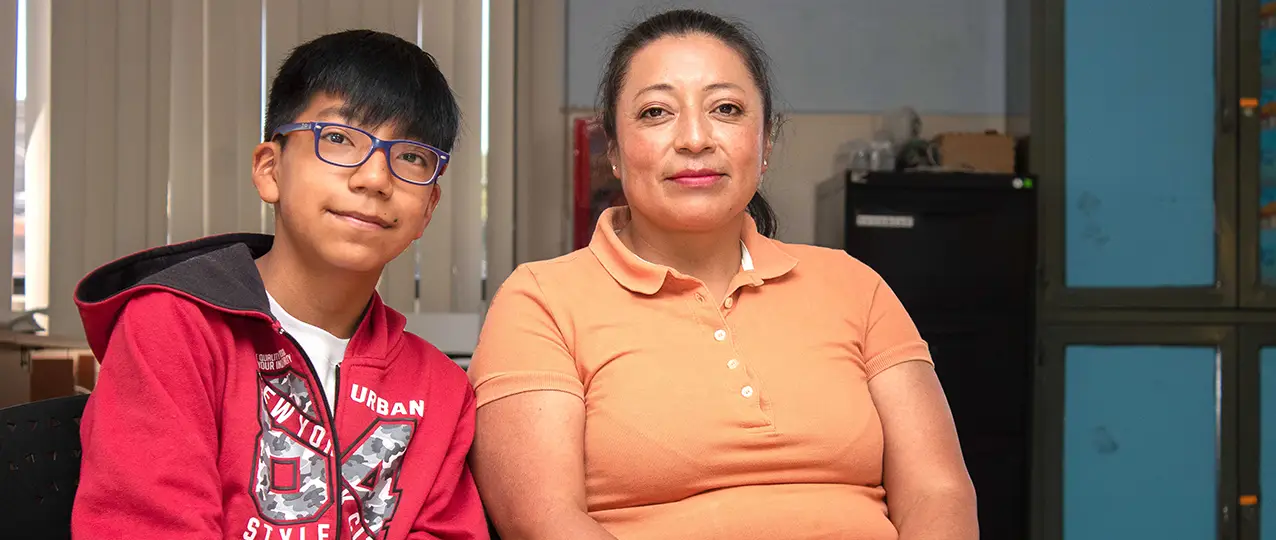
Malnutrition is responsible for nearly half of all under-5 child deaths worldwide, and obesity and chronic diseases from unhealthy eating habits also threaten children’s long-term health. That’s why educating children and their families — along with providing supplemental assistance — is a critical programmatic component.
Developing a lifetime of healthier eating practicies isn’t easy for anyone, but it is particularly difficult in the disadvantaged neighborhoods where our families live. Often lacking places to buy healthy, affordable foods, parents must often prioritize filling empty stomachs without the resources or knowledge to provide healthier alternatives.


— Gabriela Naranjo, Medical Nutririonist, Ecuador

Marjorie (above center), with her sponsored sons, Mateo (left) and Esnaider. After a regular medical checkup revealed Mateo was severely undernourished and that Esnaider was underweight, both were enrolled in our Nutrition Rehabilitation Program. All our children are screened for signs of malnourishment during their annual exams.
“My children have progressed,” says Marjorie. “Their diet has improved a lot … now that I know that food should have colors and be attractive to the eye. And our food should be varied: salad, meat, rice.”
Esnaider tells us, “I like the nutrition workshops and learning the importance of eating healthy. Well,” he admits, “I don’t like vegetables very much, but I still eat them because they are important for me to grow.”

The U.S. Food Pyramid for nutrition was replaced by the MyPlate concept in 2011. The plate icon is a simplified tool, demonstrating how people can portion a plate for healthier eating habits.

Vanessa (above), is all smiles now that her daughter, Abigail, has greatly improved her nutrition.

— Vanessa, mother of Abigail

Since being enrolled in Children International’s Nutrition Rehabilitation Program, Ismael (14, above left, with his mother, María) has continually progressed.

— María, mother of Ismael
Nutritional interventions are just one of many tools our health programs provide. For disadvantaged families in neglected communities, health education and access to adequate health care – including dental health – is foundational to ending generational poverty.
Comments
You must be logged in to comment. If you have an account, click here to log in.